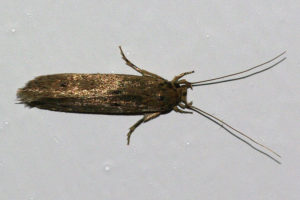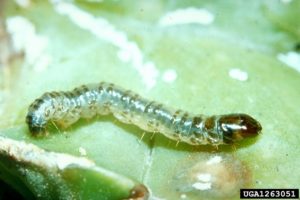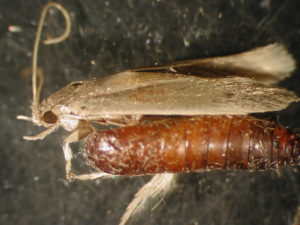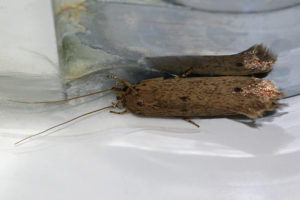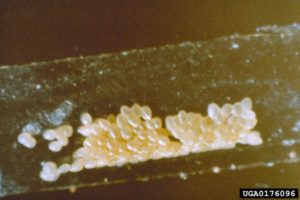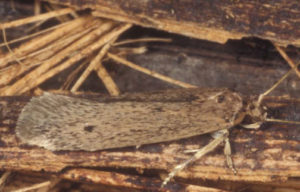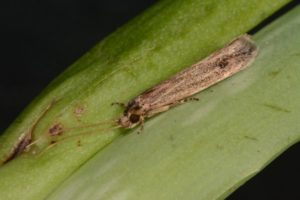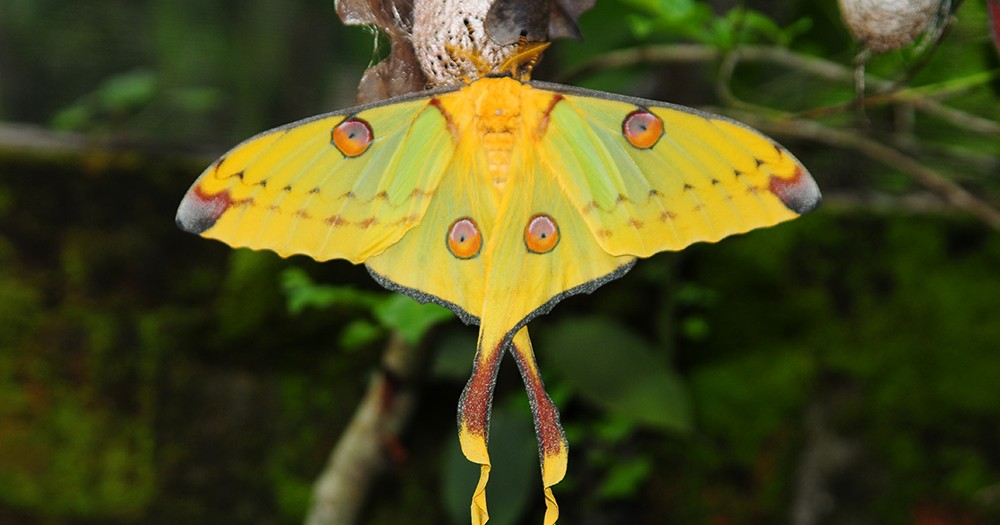Banana Moth (Opogona sacchari)
The banana moth is a member of the family of fungus moths. They originated from the continent of Africa mainly thriving in the sub-Saharan African belt.
They eventually moved out of their native land, and was widespread worldwide.
Scientific Classification
- Family: Tineidae
- Genus: Opogona
- Scientific Name: Opogona sacchari
In Brazil they were first spotted during the 1970s, then in Central America and eventually Europe. In North America’s Florida, they were first spotted since 1986. The caterpillars are considered pests to ornamentals.
Description and Identification
Adult Moth
Sexual Dimorphism: Present. A dark spot is observed on the apex of the male’s forewing, which is absent in the female moth.
Color and Appearance
Forewing: When the wings are opened, they have a dark brown base, with dark brown bands also running through them. The males have two additional brown dots right on top of their forewings as mentioned above. When closed, the brown coloration remains the same, while the bands and spots could be partially visible.
Hindwing: When the wings are opened, they are paler and brighter than the forewings. When the wings are closed, they are completely hidden.
Average wingspan: 1.8-2.5 cm
Flight pattern: Erratic
Season: Year-round
Quick Facts
| Distribution | Native: Sub-Saharan Africa in the regions of Madagascar, Mauritius, Réunion, Rodrigues Island, the Seychelles, and St. Helena Invasive: Brazil, Central America, Europe, and Florida |
| Habitat | Humid tropical and sub-tropical regions |
| Lifespan of Adults | 6 days |
| Host Plants | Bamboo, bananas, maize, pineapples, and sugarcane |
| Adult Diet | Does not feed |
Scientific Classification
- Family: Tineidae
- Genus: Opogona
- Scientific Name: Opogona sacchari

